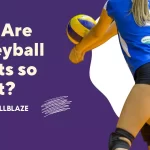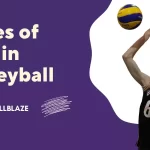Would you like to know Why Do Beach Volleyball Players Exhibit Cameltoe? Your attention might have been drawn to the sight, prompting questions about its origins.
This article explores beach volleyball uniforms and their contribution to the sport’s popularity, revealing some fascinating insights into the dynamics.
Beach volleyball is characterized by a cameltoe phenomenon, as well as by its uniforms, intense movements, and challenging beach conditions. These elements interact with public perception and aesthetics, affecting athletes’ comfort and performance.
As you gain an understanding of these elements, you will also be able to appreciate how the phenomenon of cameltoe relates to the larger context of sports.
The sections that follow will discuss the intricate design and development of beach volleyball uniforms, sports apparel, and the balance between performance, comfort, and appearance. Getting to know beach volleyball better will allow you to gain a greater
understanding of the intricate interactions that occur between athletic abilities, attire, and societal perspectives. Such intricate discussions and reflections can be sparked by something as seemingly simple as a uniform.
Beach volleyball uniforms: their nature
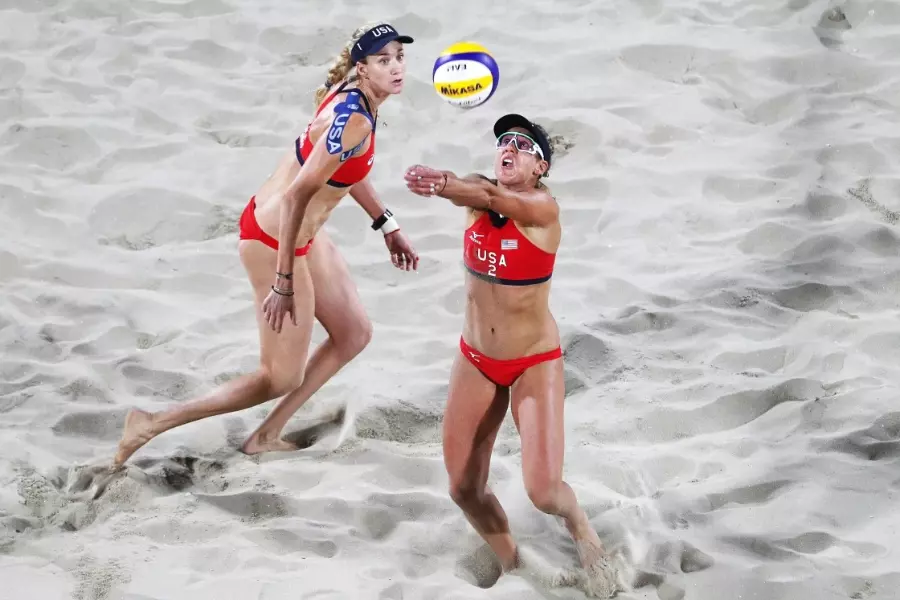
Known for its sun-drenched sands and exhilarating athleticism, beach volleyball boasts outfits that blend function with style.
It is not just a uniform, but a combination of design precision and performance practicality that underpins the competitive spirit of beach volleyball players. These outfits combine form and function to exhibit an aesthetic appeal that resonates with the vibrant beach atmosphere while enduring the rigors of the game.
Attire serves more than just as a fabric covering in beach volleyball; it expresses the sport’s unique demands and establishes an identity. Uniforms designed specifically for beach volleyball differ in their design elements and materials.
The beach’s unforgiving environment and intense physical exertion call for lightweight, moisture-wicking fabrics. Players’ comfort is enhanced by this careful selection, which also adheres to the quintessential beach vibe.
The energetic spirit of the sport is reflected in these uniforms, which often have a minimalist cut and bold colors.
Designed with functionality and aesthetics in mind, beach volleyball uniforms are as dynamic as the sport itself. Athletes can move unhindered with unimpeded agility and precision thanks to the form-fitting nature of the attire.
By strategically using seams and elastic materials, this top promotes fluid motion and efficient performance. Beach volleyball’s design ethos embodies agility and swiftness, which define the sport’s dedication to excellence.
These uniforms are technically brilliant, but they also have an intriguing feature – cameltoe visibility.
Cameltoe is an unintentional outcome of athletic movements interacting with the apparel’s design as athletes dive, spike, and leap across the sand. Beach volleyball uniforms can contribute to this occurrence even though it isn’t unique to the sport.
Inadvertently contributing to the cameltoe effect is the snugness of the fabric.
Incorporating functionality and comfort with the realities of bodily movement is one of the delicate balances that sports designers navigate.
There has been considerable discussion around cameltoe visibility in the broader context of sports regarding body positivity, athlete autonomy, and uniform design evolution. In an era when uniform designs prioritize both aesthetics and performance, athletes are more than their attire, and the challenges they face have led to broader conversations than just sport.
Sport, culture, and identity are all intertwined in this discussion, emphasizing the importance of attire that facilitates athletes’ success without distracting them from their goals.
A beach volleyball uniform exemplifies a synergy between design creativity and athletic prowess. Athletes are dedicated to their craft, as illustrated by their carefully curated outfits.
Even the most meticulous designs can encounter unforeseen interactions, as evidenced by the occasional appearance of cameltoe in this context.
The discourse surrounding such incidents echoes broader narratives about inclusiveness and functionality in sports clothing.
Beach volleyball continues to capture the attention of spectators and athletes alike, and the uniforms continue to be a testament to the artistry of design.
You may enjoy reading Beach Volleyball Training in Winter
Cameltoe: An understanding
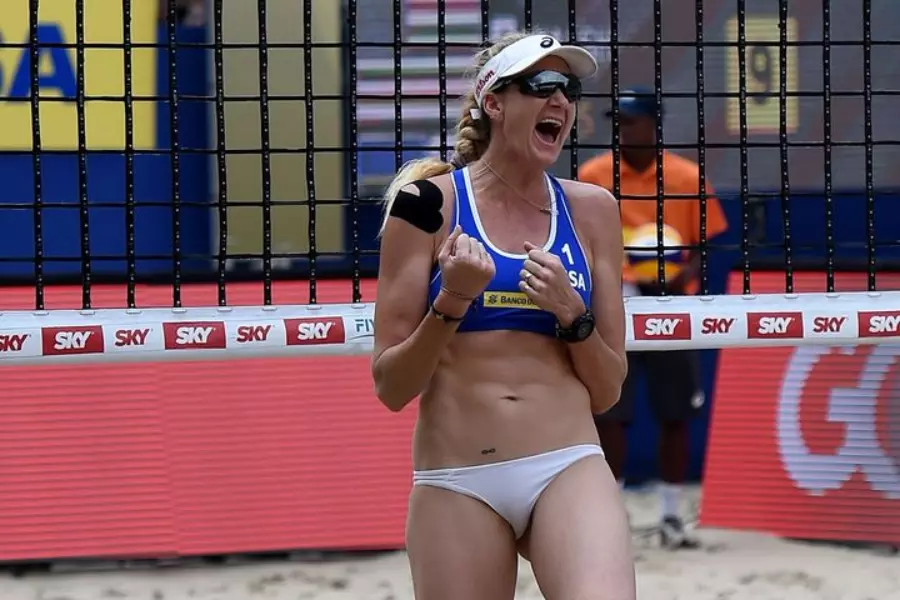
Cameltoe is a curious term found in the intricate world of sports attire – a term that transcends its whimsical name to inspire discussions about fashion, comfort, and performance.
Cameltoe is defined by a distinctive outline created by tight clothing bunching in the crotch area, and it is caused by a variety of factors beyond a simple wardrobe malfunction.
Upon further examination of this fascinating subject, we discover that cameltoe isn’t just a fashion faux pas, but rather a phenomenon deeply intertwined with athletes’ experiences and perceptions.
In essence, cameltoe arises from the physics of fabric and the movement of the human body.
The contours of the body are accentuated when clothing fits snugly, especially in areas where creases occur naturally. The result is an unintentional display that has caught the attention of people, generating discussions about style and athletic wear in general. Inadvertently, tight clothing can cause cameltoe, despite being designed to enhance performance and streamline movement.
An ongoing challenge in sports fashion is to balance functionality and aesthetics.
In fact, cameltoe is a concern that has impacted a variety of sports, not just one. Because sports demand dynamic movements, fabric adjustments, and creasing are more likely to occur.
The visibility of cameltoes has affected athletes across diverse sports, from yoga to gymnastics to beach volleyball.
Underlining this universality is the shared experience that athletes have when balancing apparel that provides them with the ability to excel and the potential for accidental exposure.
Cameltoe has become a topic of discussion that extends beyond fashion to include body image and athlete well-being.
The inadvertent display of intimate contours can lead to a range of emotions among athletes, regardless of gender. It highlights the challenges athletes face while balancing performance with personal comfort as a result of public perception pressure.
The normalization of cameltoe as a topic of discourse reflects a change in attitude towards athletes as multifaceted individuals who deserve to be given the benefit of the doubt in their sport.
Camelstoe serves as a poignant reminder of the multifaceted nature of athleticism in a world where sports apparel is meticulously scrutinized and innovated.
As a result of this discomfort, we must examine the design considerations that permeate sports fashion more closely. Cameltoe’s visibility underscores the need for open dialogues regarding both functionality and comfort, as designers constantly strive to create apparel that fosters optimal performance while respecting athlete autonomy.
In conclusion, cameltoes encapsulate a nuanced aspect of sports attire that transcends their whimsical name. Fashion, comfort, and performance intersect in this phenomenon, which is a result of tight clothing and dynamic movement.
In addition to its universality, it provokes discussions about body image and athlete well-being. Cameltoe’s discourse invites us to embrace the complexities of athletic fashion, encouraging athletes to shine without distractions caused by fabric dynamics as sports attire continues to evolve.
You may enjoy reading Best Volleyball Movies On Netflix To Watch
Cameltoe in beach volleyball: Factors to consider
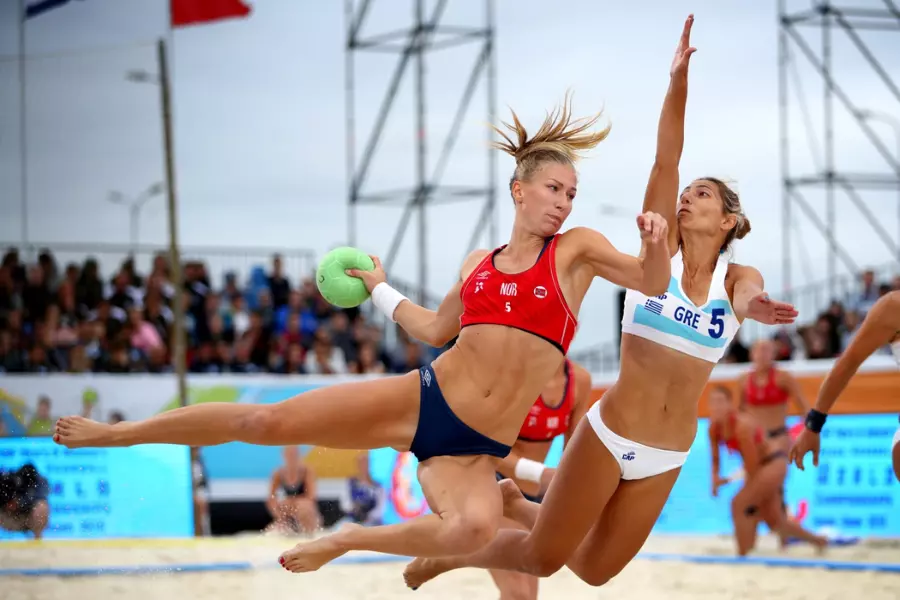
Beach volleyball is a sport that combines the intricacies of attire design with the dynamic athleticism of the game to create an intriguing phenomenon – cameltoe.
While not unique to this sport, this inadvertent visibility of intimate contours affects the athlete’s experience on the sandy court due to a constellation of factors.
The delicate balance between performance-driven attire and game demands is evident in cameltoe as we delve into the multifaceted nature of these influences.
Uniform Materials and Fit
Beach volleyball uniforms’ fit and materials are the crux of the cameltoe conundrum. Form-fitting, fluid-moving uniforms are designed to enhance agility and precision in the sport.
In order to optimize players’ performance, uniform tightness is crucial, allowing unhindered motion and reducing drag. While this close fit is advantageous in many ways, it may unintentionally make cameltoes more visible.
A cameltoe effect can occur when fabric shifts and bunches under the strain of athletic maneuvers, highlighting natural creases. It is a conundrum that sports designers must manage – balancing functionality with aesthetics of the uniform material, which is often designed to dry quickly and provide flexibility.
Body Movements and Athleticism
Beach volleyball consists of a variety of dynamic body movements, such as lunges, dives, and powerful serves.
The uniform design inadvertently interacts with these movements, which are essential to the sport’s competitive edge. The fabric adjusts to athletes’ actions, sometimes resulting in cameltoe visibility as they execute complex maneuvers.
Clothing can inadvertently become a performance variable due to the precise nature of the sport’s movements. Keeping their dignity and concentration while pushing their bodies to excel is a difficult balance for athletes.
Environmental Conditions
Beach volleyball takes place on sun-drenched beaches that add another dimension to cameltoe. The uniform’s material is affected profoundly by the environmental conditions of heat and humidity.
The fabric’s behavior can be altered by heat and sweat as athletes engage in vigorous play, possibly causing cameltoe to be more visible.
It is possible for sweat and friction to unintentionally highlight a very private aspect, particularly in areas prone to bunching. An already complex relationship between attire and athletic performance is further complicated by these environmental factors.
As a microcosm of athletes’ struggles to reconcile performance with public appearance, cameltoe’s visibility serves as a microcosm within the broader context of sport.
The article emphasizes how clothing’s response to dynamic movements affects athletes’ experiences, and how form and function are intertwined.
In order to achieve excellence, athletes push their physical limits, regardless of their sport.
We must reconsider the complex nuances that influence athletes’ journeys as these ambitions intersect with the realities of attire design.
To sum up, cameltoe is not a singular phenomenon, but rather the result of factors that intertwine attire design with the demands of beach volleyball.
Sport’s energy and intensity are reflected in the snug uniforms, environmental conditions, and environmental conditions that optimize performance.
By making this visibility visible, we invite discussion about the intersections of performance, aesthetics, and athlete experience.
During a time when sports continue to evolve, cameltoe invites us to consider the delicate balance between innovation and the human form, fostering a deeper understanding of athletics as a whole.
You may enjoy reading How Many Players Are On A Volleyball Team?
Perceptions of society and media influence
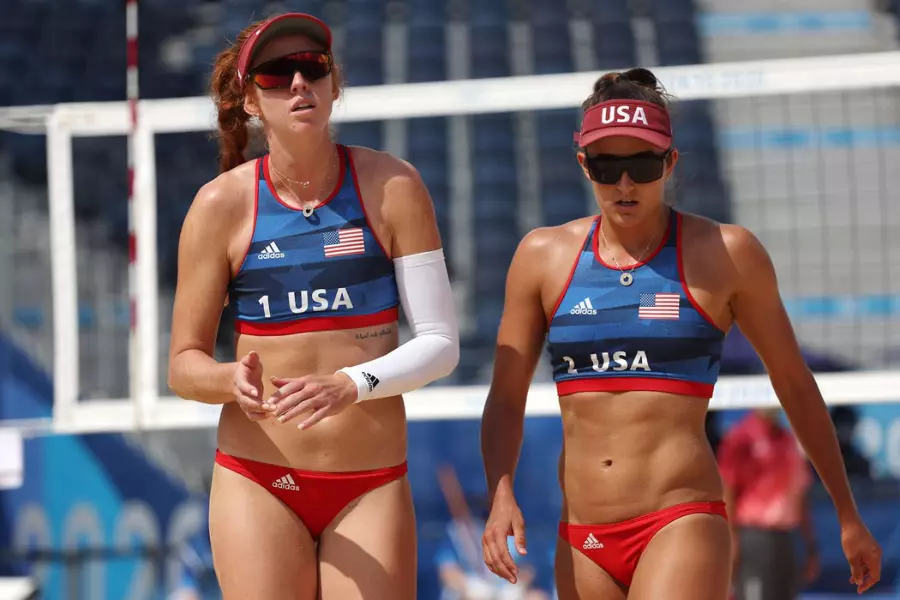
The lens of societal perception and media influence casts an intriguing shadow on the compelling world of sports, where talent and perseverance often lead the way.
Media portrayals and societal discourse have explored cameltoe, an unintentional result of tight athletic clothing, which reveals the multifaceted landscape athletes traverse beyond the court.
A broad view of athletes’ identity and appearance can be gained as we examine the intricate relationship between appearance, pressure, and performance.
Exploration of Media Portrayal
Media portrayals of cameltoe play a crucial role due to their widespread reach. The media often exaggerates this phenomenon, rather than focusing on the nuance of athletic attire.
As a result of the spotlight put on cameltoe, athletes’ achievements can be overshadowed and their dedication to their craft can be undermined.
By creating click-worthy images, these visuals invite discussions about the balance between athletic prowess and media sensationalism, blurring the line between athlete and appearance.
You may enjoy reading What If Every Sport Was Photographed Like Beach Volleyball?
The Social Pressure on Athletes’ Appearance
Certain aesthetic standards are undeniably imposed upon athletes within this complex narrative. The performance of athletes on the field is scrutinized as much as their appearance off the field.
Athletes can be judged for their skills as well as their bodies as a result of the public’s expectations. Athletes’ self-esteem and mental health can be impacted by this pressure.
It is difficult for athletes to navigate the tension between sports demands and societal expectations as they strive for excellence.
Convergence of Performance and Public Image
Bringing performance and public image together presents a delicate challenge for athletes. Pursuing excellence on the field often requires intense discipline and dedication, which can be more important than concerns about appearance.
Performance and image have become a tightrope walk in an era when athletes are also seen as public figures.
As athletes grapple with both the physical demands of their sport and the scrutiny of their attire, cameltoe adds an additional layer of complexity. Considering this delicate balance, we can ask whether athletes are intended to represent societal ideals or to be individuals dedicated to their sport.
Overall, the interplay between societal perceptions and media influence reveals the intricate tapestry that shapes athletes’ lives.
We examine appearance and athleticism through the lens of cameltoe, an apparently simple fashion occurrence. Athletes’ bodies are subjected to societal pressure and the media’s portrayal of this phenomenon reflects the complexity of contemporary sports culture.
With athletes rising above challenges and achieving success in their respective disciplines, the dialogue surrounding cameltoe emphasizes their humanity beyond their uniforms.
We need to redefine narratives that empower athletes not just to excel in their sport but also in their individuality and self-expression in a world where athleticism, image, and identity intersect.
You may enjoy reading Why Do Volleyball Players Tape Their Fingers?
Adaptation mechanisms and solutions
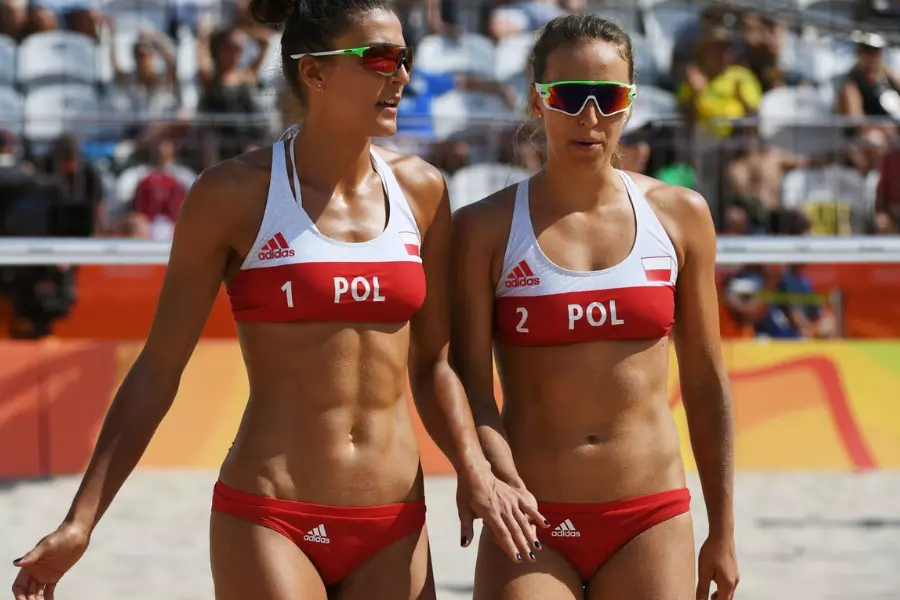
Cameltoe requires innovative coping mechanisms that seamlessly integrate comfort, performance, and aesthetic considerations in beach volleyball, where athletes perform dynamic maneuvers on sun-kissed sands.
It has been demonstrated that athletes are capable of adapting and finding solutions that enable them to remain focused on their sport without distractions.
As athletes strive for excellence on the court, they utilize specialized undergarments and clothing adjustments.
Various strategies used by athletes
In order to reduce the visibility of cameltoe, athletes have employed a number of strategies. A common approach to ensuring coverage and support is to wear specialized undergarments.
As well as providing extra comfort, these undergarments mitigate the possibility of cameltoe caused by clothing adjustments. To maintain the optimal fit, athletes have also altered their clothing, such as opting for looser-fitting bottoms or using discreet taping methods.
Athletes’ ability to adapt on the court and their commitment to ensuring a seamless experience is demonstrated through these strategies.
Utilization of Specialized Undergarments
To overcome cameltoe’s challenges, athletes utilize specialized undergarments. Moisture-wicking undergarments reduce friction and prevent fabric bunching by providing a protective barrier.
Athletes can address both functional and aesthetic aspects of their attire by selecting undergarments that complement their movements and games.
In addition, athletes can maintain their focus on the game by carefully adjusting their clothing, such as by securing fabric with discrete tape.
Performance and Comfort on the Court
Athletes must remain focused and be physically strong on the beach volleyball court.
The importance of comfort cannot be overstated in this context. Cameltoe affects athletes’ comfort and concentration, despite being a fashion concern.
Competing at the highest level requires athletes to devise coping mechanisms that balance comfort and performance. As athletes navigate these challenges, they demonstrate that winning transcends the boundaries of sportswear in their pursuit of success.
It is a testament to athletes’ resilience and adaptability that they devise solutions to address the issue of cameltoe visibility as the sporting world has evolved.
Athleticism is more than a wardrobe fix. It is a commitment that enables you to overcome obstacles and thrive against obstacles. As athletes are able to mitigate cameltoe’s visibility, they are more able to focus on their game than on their attire, allowing them to boost their performance.
The technicalities of the game and the choices athletes make regarding attire are key components of a world where athletic performance is revered.
As a result of cameltoe, athletes are forced to use innovative and resourceful strategies to enhance their experience.
Choosing solutions that prioritize both function and appearance demonstrates the athlete’s commitment to excellence as well as his willingness to embrace the nuances associated with competing in front of the camera.
The Uniform Design Conversation
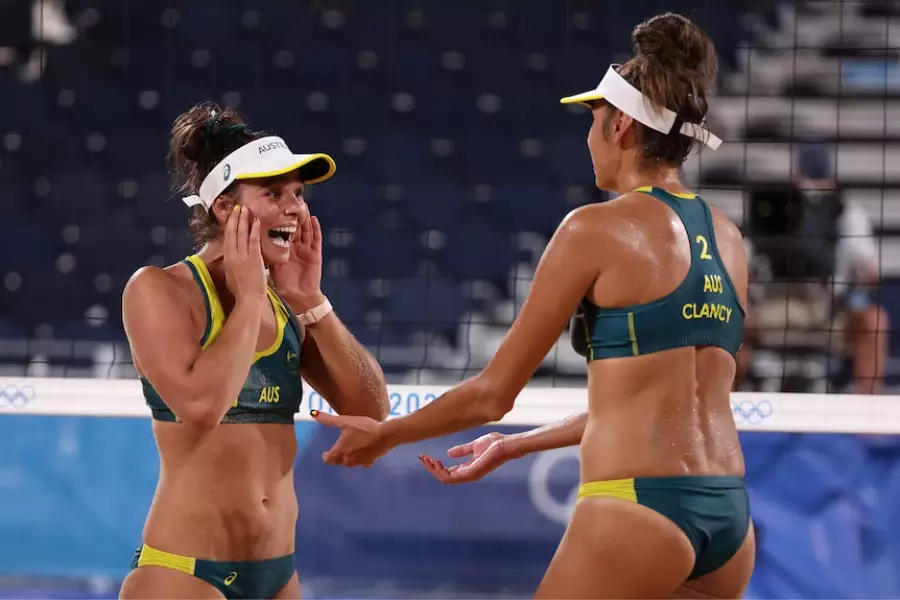
There has been considerable debate about uniform design within the sports arena, where competition and camaraderie intersect. Athletes’ performance and societal perception are both impacted by attire, as these discussions within and beyond the sports community demonstrate.
Sports uniform design encompasses a complex web of considerations that extend far beyond the confines of sports, from ongoing debates about uniform modifications to athletes’ voices in shaping their attire choices.
Sport Community Discussions
Discussions about uniform design in the sports community have delved into nuances of functionality, aesthetics, and identity.
Athletes and sports attire are becoming increasingly recognized as more than just canvasses for logos and team colors; they are extensions of who they are and what they do.
In addition to conveying dedication, belonging, and ambition, athletes’ attire communicates dedication, belonging, and aspiration.
Considering the potential impact uniform design may have on athletes’ mindset and self-confidence, ongoing discussions have taken place.
Uniform Modification Debates
Sports and uniform modifications are constantly evolving, just like the world of sports itself. It is a uniform design that becomes a focal point of change as sports strive for inclusivity and progress.
The importance of gender-neutral clothing, fabric technology, and comfort has been highlighted. Sport’s cherished symbols are intertwined with its need to adapt to modern needs and values, where tradition meets innovation.
Sports culture’s evolving ethos is reflected in the result of these debates, not just aesthetics.
Athletes’ Voices in Uniform Choices
In recent years, athletes’ voices have become increasingly prominent in the process of shaping uniform choices.
Athletes are increasingly being recognized as stakeholders in the decision-making process regarding their attire, which has a direct impact on their performance.
The design process now takes into account their perspective on comfort, functionality, and representation.
As a result of this shift, uniform design has evolved from a top-down endeavor to a collaborative one that incorporates athletes’ insights, experiences, and desires.
The debate around uniform design reflects broader societal conversations as it unfolds.
There is more to a uniform than just fabric; it is a symbol of culture, tradition, and the human spirit that drives athletes to achieve their best. Design is a brushstroke that contributes to a wider canvas of identity and purpose, from the intricacies of fabric technology to the influence of cultural heritage.
Taking place in a rapidly evolving world, athletes represent the values of tradition and progress, navigating the intersection of tradition and progress.
You may enjoy reading What To Wear For Volleyball Tryouts
Evolution of Sports Uniforms
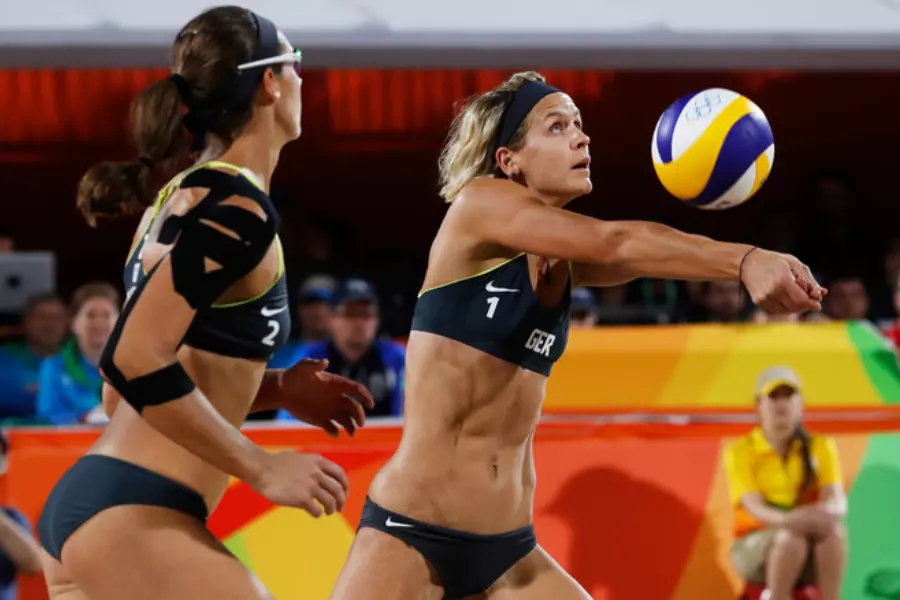
Throughout history, sports uniforms have evolved into a fascinating journey through history, culture, and the ever-changing trends shaping athletics.
In addition to design and functionality, the evolution of athletic attire reflects the sociocultural context in which sports have thrived, not just its humble origins.
History of Athletic Uniforms
Athletic uniforms have a historical context that takes us back to an era when sports were both competitions and displays of societal values. Sports were held in ancient civilizations as a means of showcasing one’s physical prowess and honor.
Nudity was symbolic of purity and the connection between humans and divine beings as athletes competed. With the development of civilizations, athletic clothing evolved as well.
A growing number of organized sports emerged in the Middle Ages, and clothing reflected the modesty and hierarchical structure of the time.
Modern vs. Older Designs
Compared to modern uniforms, older designs are strikingly different. As a result of societal norms of the time, traditional attire was often simple and modest.
Sports uniforms evolved as local pastimes transformed into global spectacles, incorporating functionality, performance, and brand recognition.
Technology and aesthetics are melded in modern sports uniforms. We select materials carefully to ensure that they are moisture-wicking, breathable, and flexible.
As well as being functional, designs are also emblematic of a franchise’s identity, representing its history and spirit through colors, logos, and typography.
Changing Trends in Uniform Choices
Trends affect uniform choices, illustrating how sports and culture are dynamically intertwined. In the same way that societal values change, so do the designs worn by athletes.
Fashion, technology, and aesthetic changes often reflect the zeitgeist in uniforms. As gender norms shifted in the 20th century, women’s sports and attire accommodated their participation.
Using fabrics engineered for maximum comfort, movement, and moisture management, athletes have reached new levels of performance in recent decades. Uniforms serve both as functional attire and fashion statements in the era of sport and fashion convergence.
Our journey through the annals of sports uniform evolution is not only filled with changes in design but also stories of athletes who shaped history.
Uniforms are a canvas that tells the tales of champions, underdogs, and the spirit of competition, from the iconic simplicity of early attire to the high-performance gear of today.
Uniforms are a visual representation of a sport’s legacy and its enduring impact on society.
You may enjoy reading Should Volleyball Players Wear Ankle Braces?
Keeping Comfort, Performance, and Aesthetics in Balance
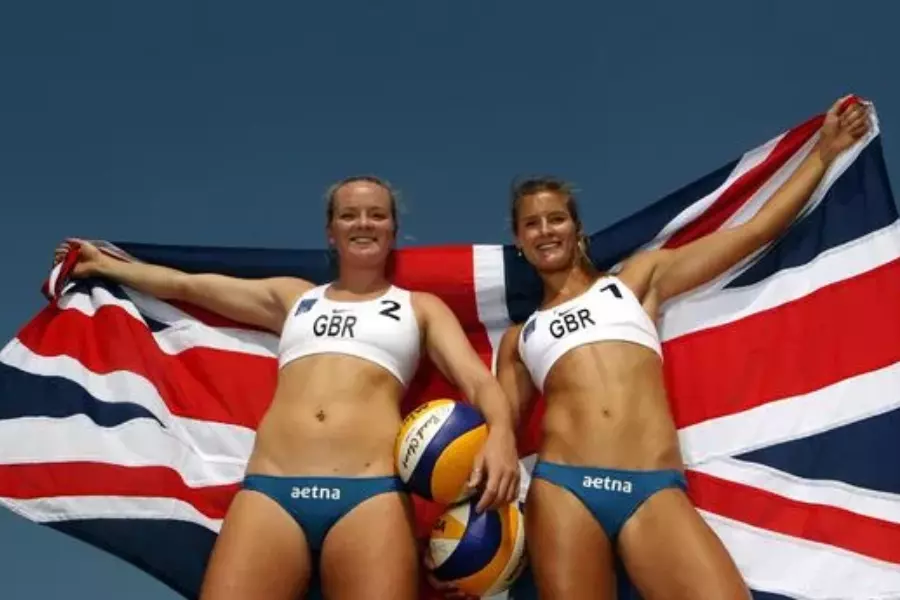
A nuanced challenge exists in the design of sports uniforms, as comfort, performance, and aesthetics are all closely intertwined.
Athletes’ diverse needs are balanced with both functional and visual demands in uniform design, a delicate art. To attain greatness, athletes must think creatively, innovate, and show empathy for the people who wear these uniforms.
Sports Uniform Design Challenges
Choosing colors and logos is only the tip of the iceberg when it comes to designing sports uniforms. An athlete’s attire should not only represent a team’s identity but also empower him or her to perform at the highest level.
The process involves choosing fabrics, ensuring that they fit correctly, and ensuring durability. In order to maintain a seamless blend of style and substance, each design decision must align with the specific requirements of the sport.
Consideration of Athletes’ Needs and Comfort
Athletic uniforms should be designed with athletes in mind – the individuals who breathe life into them.
Sports performance is directly impacted by athlete comfort, as it hinders their ability to concentrate.
An athlete’s physicality is supported by breathable materials, moisture-wicking fabrics, ergonomic seams, and seam tapes that prevent chafing.
Designers recognize that performance is tightly intertwined with comfort, which is why they strive to create uniforms that boost athletes’ performance.
Performance and Appearance Impact of Design
Uniform design is influenced by both performance and appearance. An athlete’s agility and coordination may be affected directly by a uniform that allows them to move freely.
Moreover, aesthetics play a pivotal role in fostering fan engagement and team identity. Teams create a visual narrative through logos, colors, and designs that connect athletes to their fans.
The masterful uniform design achieves an aesthetic balance between features that enhance performance and attract attention.
In order to achieve the synthesis of comfort, performance, and aesthetics, sports equipment must constantly evolve in response to technological advances, fashion trends, and the desires of athletes. Fashion trends influence visual aesthetics and new fabrics enable greater functionality, so uniform designers must remain agile and adaptive.
It is crucial that athletes’ insights, gained through their lived experiences, be incorporated into the very clothing they wear on the field, ensuring that their voices are heard.
Athletes and designers alike are committed to excellence, which is evident in the meticulous consideration of uniform design in the world of sports.
Athletes wear uniforms as extensions of their identities and as symbolic representations of their dedication to their craft.
They are more than just garments; they are extensions of who they are. It captures the pure spirit of athleticism through the synergy between form and function in every stitch, detail, and design choice.
As a whole, sports uniform design embodies the engineering and artistry that define modern athletics through its harmonious convergence of comfort, performance, and aesthetics.
Incorporating these elements seamlessly enhances the athlete’s experience, empowering them to achieve new heights while creating a visual legacy beyond the limits of the sport. Innovating, empathizing, and relentlessly pursuing perfection are the hallmarks of the journey.
FAQs
Are all beach volleyball uniforms prone to cameltoe?
There is no problem, but the tight-fitting nature of most uniforms can cause problems.
How do beach volleyball players deal with cameltoe?
It may be necessary for them to use different undergarments, and padding, or wear alternative uniforms.
Is the focus on cameltoe harmful to athletes?
It is problematic to place too much emphasis on cameltoe overshadowing athletes’ skills and accomplishments.
Do male beach volleyball players face similar clothing-related issues?
Male players may encounter discomfort due to the design of their uniforms, although they are not cameltoe.
What can be done to promote body positivity in sports?
The promotion of body positivity in sports can be achieved by encouraging a diverse range of body types and recognizing athletes’ abilities.
Conclusion
Cameltoe in beach volleyball is influenced by many factors, including uniform design, body type, and cultural factors.
In order to keep athletes comfortable and perform at their best, it is essential to strike a balance between performance and comfort. Additionally, this issue emphasizes the need for sports to promote body positivity and evolve beauty standards.
You can also read At Long Beach State, the women’s volleyball team swept


